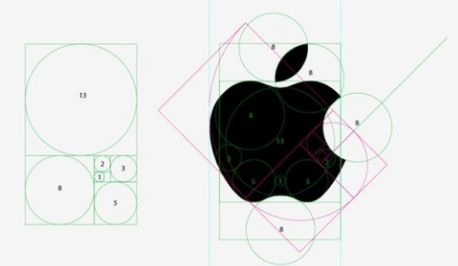A Logo is the face of a company. Companies, especially large corporations, spend a fortune to spruce it up until it conveys what they want it to convey – or so they think.
The truth is that sometimes a logo may subliminally convey messages to the subconscious which sometimes even the creators may not be aware of. People may respond positively or negatively to the logos without knowing that they may be unconsciously responding to the hidden subliminal messages. To that extent, shapes are more than a bunch of lines connecting each other.
Here you go

Types of shapes and their meanings
Essentially there are three types of shapes: Geometric, Organic and Abstract. Each has some exclusive and some overlapping properties.
Geometric shapes include the familiar shapes such as circle, triangle, square and others.
Circles: Since circles have no beginning or end, they represent the eternality and completeness of life. The curves in a circle represent graceful feminine nature with free flowing energy. It also represents infinity and protective covering all around. Some of the well known companies with a prominently circular logo include GE, Mercedes Benz, Volkswagen, and LG.
The circle in GE logo represents increasing global presence and vision of the company. The three pointed star in Mercedes Benz originally represented making vehicles for land, water and sky. Thus the circle around it represents the globe.
Squares and rectangles: They represent stability, conformity and trust. These are sometimes tilted slightly to add a little spice to these shapes which can otherwise also be perceived as too bland. The companies which contain these shapes through their simplistic typeface are IBM, Sony, Nokia, Kodak and GAP.
IBM is one of the top technology brands in the world. Its logo is simply the name of the company, which renders it a rectangular shape. The block letters are cut by horizontal stripes which represent speed, dynamism and an open culture. And the block letters in blue represent authority and professionalism.
Triangles: They suggest dynamism, movement and have the masculine energy of change. A triangle sitting comfortably on its base may suggest stable movement or dynamic tension when not supported at the base. The shape draws the mind’s subconscious movement from its widest base to the narrow tip which then subliminally conveys the idea of progress or retrogresses. Companies sporting sharp angles or triangles in their logos include Carrefour, FedEx (in the white space).
In 2003, Australia faced decline in tourism amidst SARS scare in Southeast Asia. That’s when Australia Tourism decided to revise its logo. The old version of the Kangaroo in the logo was completing its jump, hence was on a downward trajectory and looked quite tired. With its snout, feet and tail, it was forming a triangle which was pointing backward. Subliminally, the logo was highlighting downward and backward movement. The revised logo had a kangaroo that had just started the jump, was on an upward trajectory and projected a forward shooting triangle. The new logo was released in May 2004 and by December that year, the international tourist traffic into Australia was up 9 percent and increased a further 7 percent in the next nine months.
Organic Shapes: These are irregular, curvy and natural shapes such as trees, leaves, rocks or clouds. These shapes convey idea of spontaneity and freshness. By being closer to nature, it also conveys a sense of being closer to human values of honesty. Such shapes are most prominent with organizations that support nature or wildlife. World Wildlife Fund (WWF) uses panda image through an intelligent use of white spaces.
Abstract Shapes: These are simplified symbols of organic shapes and are common to logos and icons.
One of the most well-known logos with Organic shape that has been turned into an abstract is that of Apple. The abstract bitten apple is a symbol of the fruit from the “Tree of Knowledge”.
The logo is also a geometrical shape carved out of circles whose radius-es are formed of Fibonacci sequences. This shows the mathematical and engineering brain behind the company, not to mention the artistic genius that goes into its logo. No wonder Apple is spearheading the technological revolution.

As you can see, logos reveal a lot more about their companies than what meets the eye. No wonder companies spend a lot on getting their logos right, both for a quick glance and recognition and also for what they do to you subliminally.
It must be noted; however, that a well thought of logo by itself cannot decide the fortunes of a company. A great logo must represent the inherent culture, drive and ambition of the company that is ably envisioned and executed by a visionary top management and skilled and passionate employees.




